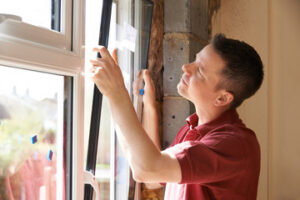Utah Disaster Cleanup is a complex process, with responsibilities falling to the local, state, and federal governments and individual families. This article will discuss the five aspects of disaster cleanup and how individuals and communities can contribute to the effort.
Professional disaster restoration companies prioritize safety standards and work efficiently to expedite the cleanup process. They also have experience in handling insurance policy claims and can help homeowners document their losses.

The speed and effectiveness of recovery efforts depend on the accuracy and comprehensiveness of damage assessment. A timely and well-coordinated assessment can reveal new risks and vulnerabilities and lead to measures that mitigate future disasters. For example, a detailed damage assessment can identify areas that are more susceptible to flooding and help prevent water damage.
An effective and efficient damage assessment process begins with the development of a Damage Prevention Plan (DPP). The DPP details what the people in a house or business should do when a damaging event occurs, including a regular inventory of items and verification that emergency systems like smoke detectors are tested frequently and operating optimally. This DPP can also include emergency supply lists and instructions on how to communicate with family members, coworkers and neighbors.
Immediately after a disaster, county officials should begin the initial damage assessment process to determine the severity and magnitude of the impact. A preliminary damage assessment is a snapshot of the impacts at the local level and is used to determine whether or not a disaster declaration is necessary. A Joint Preliminary Damage Assessment is a more detailed and thorough examination of the impacts conducted by both the state and local governments.
A damaged building can present serious health and safety hazards, so a qualified person should assess the area before entering if it is safe to do so. This includes checking for toxic chemical spills, downed electrical lines and structural damage. In addition, a person should wear personal protective equipment, such as hard hats, dust masks and eye protection when examining a damaged home or office.
The state, local government, community or private non-profit organizations can conduct an Individual Assistance preliminary damage assessment. These teams can be notified of the opportunity to participate in a PDA through the official request made by the State Emergency Operations Center (EOC). A state representative, who is familiar with the extent and location of the damage within the county, should be included on the team, if possible. The team will be able to collect information on private damage and report it back to the EOC, which can then use that data to decide if federal assistance is warranted.
Cleaning
Disaster cleanup is a crucial process that involves the removal of debris, repair of damaged structures, and cleaning and sanitizing. The faster disaster cleanup is completed, the quicker affected individuals and communities can return to normal life. This task requires the expertise of professionals who can safely and efficiently clean up the damage.
The first step in disaster cleanup is to remove any debris that poses a risk to the health and safety of the affected area. This can include things like fallen trees, unsecured electrical wires, and contaminated water. Professionals use appropriate safety equipment to protect themselves from hazards, such as masks, sturdy shoes, and gloves. They also ensure that the environment is safe by checking for gas leaks, unstable structures, and downed power lines.
Contaminated water from flooding or fire damage is another potential hazard. It can contain bacteria, chemical waste from factories, and raw sewage, which poses serious health risks to those who come in contact with it. If left untreated, contaminated water can lead to skin infections, stomach issues, and lung problems. Disaster cleanup professionals work to prevent contamination by pumping out and drying affected areas as quickly as possible.
After the removal of hazardous debris, disaster cleanup professionals can begin to repair damaged structures. This may include making roof repairs, restoring walls and foundations, and replacing damaged electrical and plumbing systems. Professionals can also help people sort through their belongings to determine what is salvageable and what needs to be thrown away. They can also document the extent of the damage for insurance claims purposes.
The federal government plays a key role in disaster cleanup, providing funding and support to state and local governments as well as private organizations. They can also provide specialized equipment and expertise that is not available locally.
Individuals and families can also assist with disaster cleanup by preparing ahead of time. By assembling cleaning supplies and tools, they can make the process more efficient and safe. They should also secure their homes by putting up boards or boarded up windows, and give cleanup companies a layout of their home so they know how to move items around.
Disposal of Debris
The aftermath of almost any disaster, natural or man-made, creates debris. This debris includes everything from white goods such as washers and dryers, to construction and demolition (C&D) waste, vegetation, sandbags and categories of items too numerous to mention. Disposal of this debris must be carefully controlled and managed.
The disposal process is governed by FEMA and state regulations. A Presidential Disaster Declaration opens the door to Federal Public Assistance funds, authorized by the Stafford Act, which provide a cost share of removal costs. Local governments must also contract for private debris removal when their resources are overwhelmed.
A disaster cleanup contractor can provide guidance regarding local regulations, as well as the best disposal methods for various types of debris. Some items can be recycled, which helps to reduce landfill usage. For example, electronics and plastics can be dropped off at recycling centers. In addition, water bottles and other containers can be returned for a refund when they are empty.
Some of the debris generated by disasters is considered hazardous and requires special handling. Hazardous materials such as asbestos and lead must be disposed of in a special manner. This can be a time consuming and costly task. This is especially true for commercial properties.
It is important to determine responsibilities, plans and timing for debris removal before a disaster occurs. Many municipalities have a disaster debris management plan in place to ensure a smooth response and recovery after a storm. The plan may include a contract in advance with a specialized debris removal company that will be contacted when a disaster strikes.
The cleanup process can be extremely dangerous. Those involved must wear hard hats, safety goggles and respirators. In addition, they must follow the safety precautions and directions provided by responding authorities. It is also essential to avoid unstable structures.
Often, disasters generate debris that cannot be safely removed without the aid of heavy equipment and machinery. Fortunately, several government agencies and non-governmental organizations are well-versed in the cleanup of such debris. They can also assist with restoration, which involves bringing property back to pre-disaster conditions.
Insurance Claims
When a disaster strikes, the insurance company will need to be notified and involved in the cleanup process. While some homeowners believe they can save money by handling the cleanup themselves, it is often not a good idea. Disaster cleanup requires special tools and procedures and should be handled by a disaster relief team. Improper cleanup can lead to more expensive restoration costs.
The disaster relief team will also assess the damage and determine whether to file an insurance claim. They will be able to tell you what is covered and how much the policy holder can expect to get in claims. They will take photos, do an inspection and complete other tasks such as boarding up windows or tarping holes in walls or roofs to prevent theft or additional damage from rain (mold can start within 72 hours of water damage). They will also safeguard personal property and move it to a safe place when necessary.
If the home is considered unlivable, the insurance company may reimburse the policy holder for living expenses while their home is being restored. Depending on the policy, this could include the cost of hotel rooms or meals out if necessary. This is something to ask about during the phone call with the insurance company and make sure you save receipts for everything.
One of the best things about calling a disaster relief company is that they will handle all of this for you. After their initial assessment and advice on whether to use the insurance, they will take care of cleaning up, gathering evidence, getting estimates, dealing with the insurance adjuster and negotiating to get you the most claims money. They will also help you rebuild, restore or upgrade your home after the insurance is paid out.
In a disaster, there are many different types of costs that can be incurred, including emergency cleaning and repair costs, living expenses, additional damage to personal property, administrative needs, and legal fees. These costs can easily become confusing when submitting an insurance claim and can be hard to distinguish from normal operating expenses, especially in the wake of a catastrophic event. This is why it is so important to have a disaster plan and to prepare an emergency savings fund that can cover any unexpected costs.








